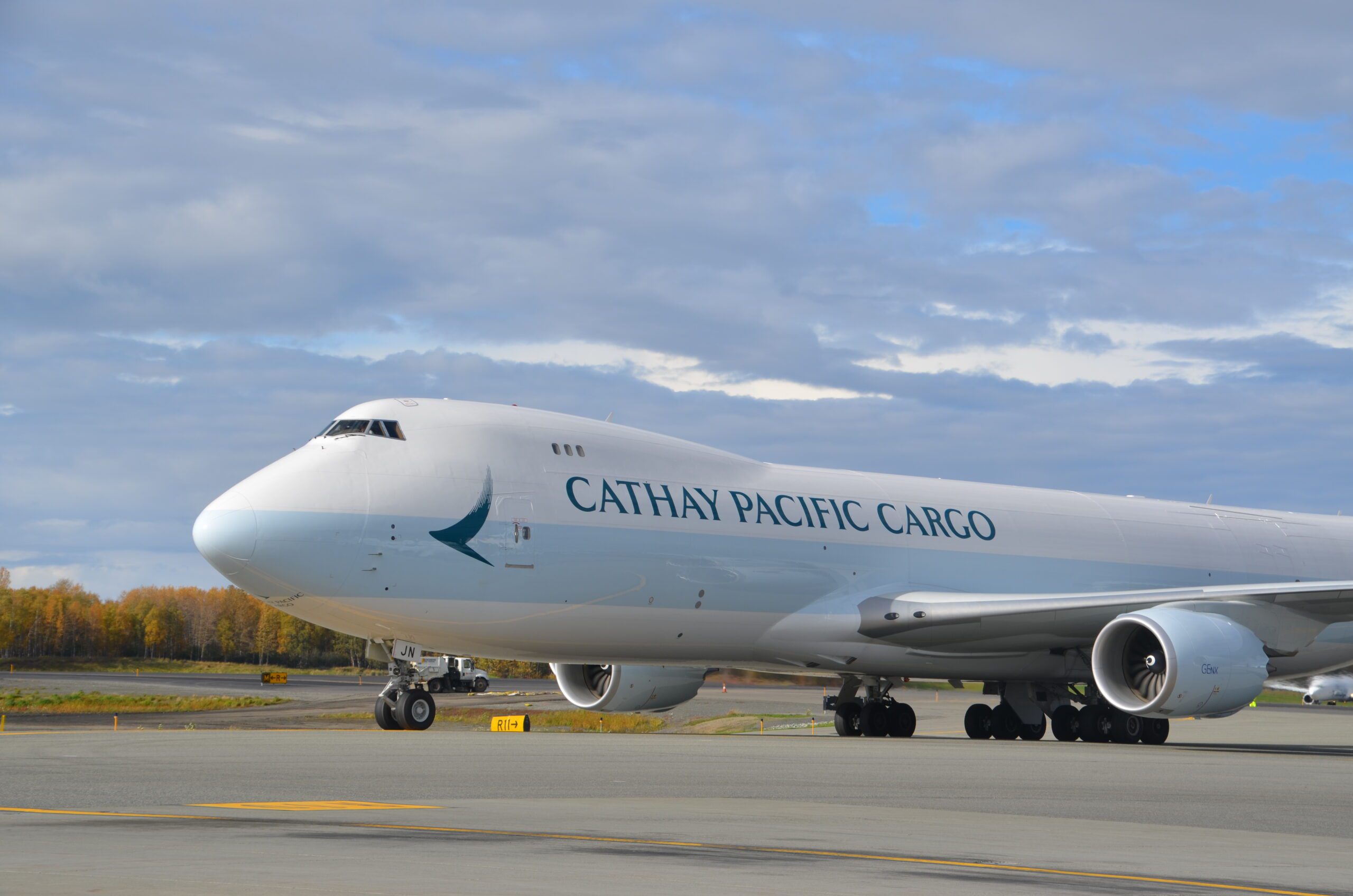
EK SkyCargo staff with hand flags 399309 scaled
Building upon the strong performance reported in February, the air cargo industry continued its impressive growth trajectory in March 2024, as highlighted by the latest data from IATA.
March marked the fourth consecutive month of double-digit year-on-year (YoY) growth in global air cargo demand, measured in cargo tonne-kilometers (CTKs).

Sustained Double-Digit Growth: A Record-Breaking Quarter
The surge of 10.3% is even more remarkable when considering that it surpasses the record-breaking performance of the first quarter of 2021, a period significantly impacted by the pandemic. Seasonally adjusted CTKs also saw a robust increase of 11.4% YoY.
This sustained growth is evident across international operations, which expanded by 11.4% YoY, fueled by strong demand across all regions and major trade lanes. Carriers from the Middle East, Africa, and Asia continue to lead the pack, demonstrating the dynamism of the air cargo landscape.
The overall positive trend continues, however, the March growth rate of 10.3% is slightly lower than February’s growth of 11.9%.

Regional Highlights
- While all regions experienced growth, the Middle East (+19.9%) and Africa (+14.2%) saw the strongest demand, potentially driven by factors like trade with Asia and new air cargo hubs.
- Asia-Pacific (+14.3%) remains a major player, with growth on the Asia-Europe and intra-Asia routes.
- Europe (+10.0%) witnessed a resurgence in intra-European routes (+24.7%), potentially indicating a shift in focus within the market.
- North America (+0.9%) continues to be the weakest performer, possibly due to specific regional trade dynamics or sourcing patterns.

Capacity Expansion: Belly Cargo Takes Center Stage
Keeping pace with the demand surge, the industry’s available cargo tonne-kilometers (ACTK), which reflect global capacity, increased by 7.3% YoY. Belly cargo capacity experienced a significant 29.5% year-on-year increase.
This expansion is primarily driven by the continued growth in international passenger belly-hold capacity, highlighting its crucial role in meeting demand alongside dedicated freighter aircraft.
It’s noteworthy that the YoY growth in air cargo traffic significantly outpaces the modest expansion seen in global trade and production metrics. This suggests that factors beyond traditional economic indicators are driving the air cargo boom.

A Positive Sign Amidst Uncertainties
While the overall air cargo picture remains positive, there are some differences to consider. Compared to February, the industry-wide air cargo yield (revenue per unit) saw an increase of 5.0%, aligning with the rising load factors. This indicates a potential stabilization in pricing, which is a positive development for the industry.
Moreover, ongoing capacity constraints in maritime shipping, like the Red Sea bottleneck, might be pushing cargo toward air freight as an alternative.
However, some uncertainties remain. As mentioned in the February report, potential price pressure could arise due to the slight decline in air cargo yields observed in February. Additionally, the long-term impact of geopolitical and economic factors, such as the war in Ukraine, is yet to be fully understood and could disrupt trade flows and impact air cargo demand.

Conclusion
Despite these potential challenges, the air cargo industry continues to demonstrate remarkable resilience and adaptability. The March figures paint a promising picture, suggesting that the positive momentum is likely to continue in the coming months, potentially exceeding even pre-pandemic levels.
However, careful monitoring of economic and geopolitical factors is a must for navigating successively through the evolving landscape and ensuring the industry’s long-term success.
IATA’s March Analysis: March 2024 Air Cargo Market Analysis (pdf)
Views: 1



